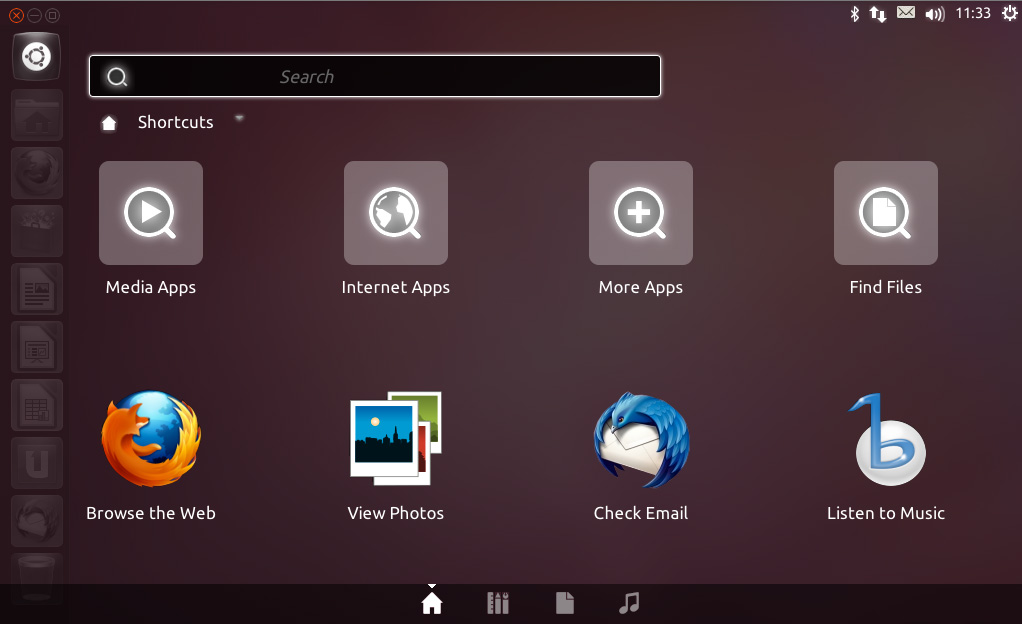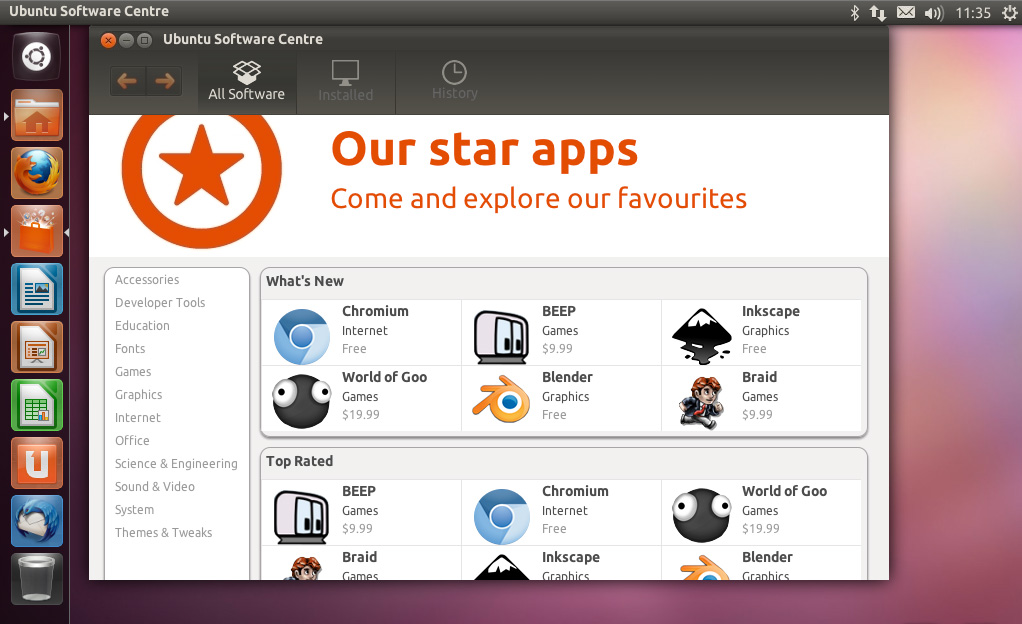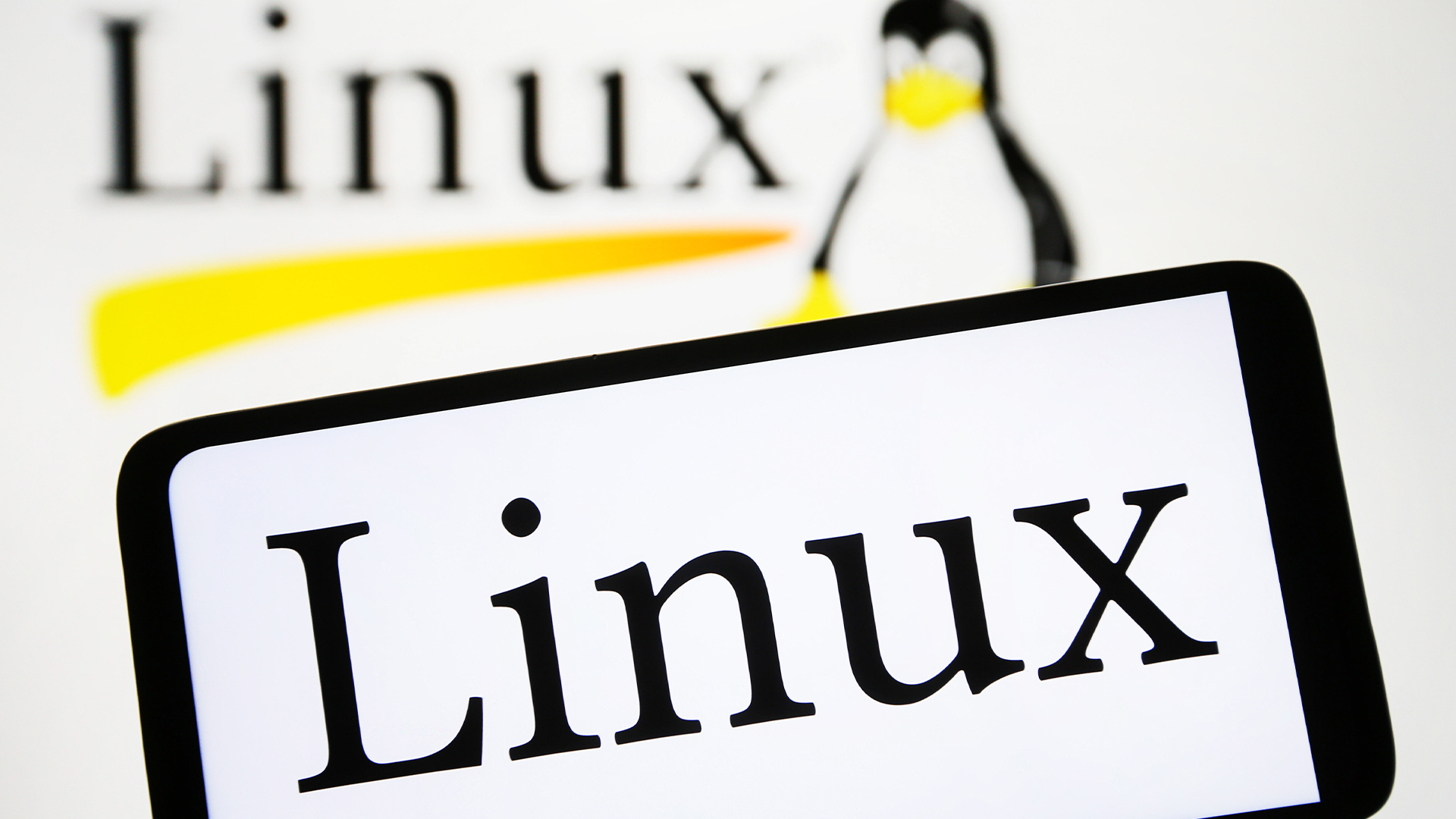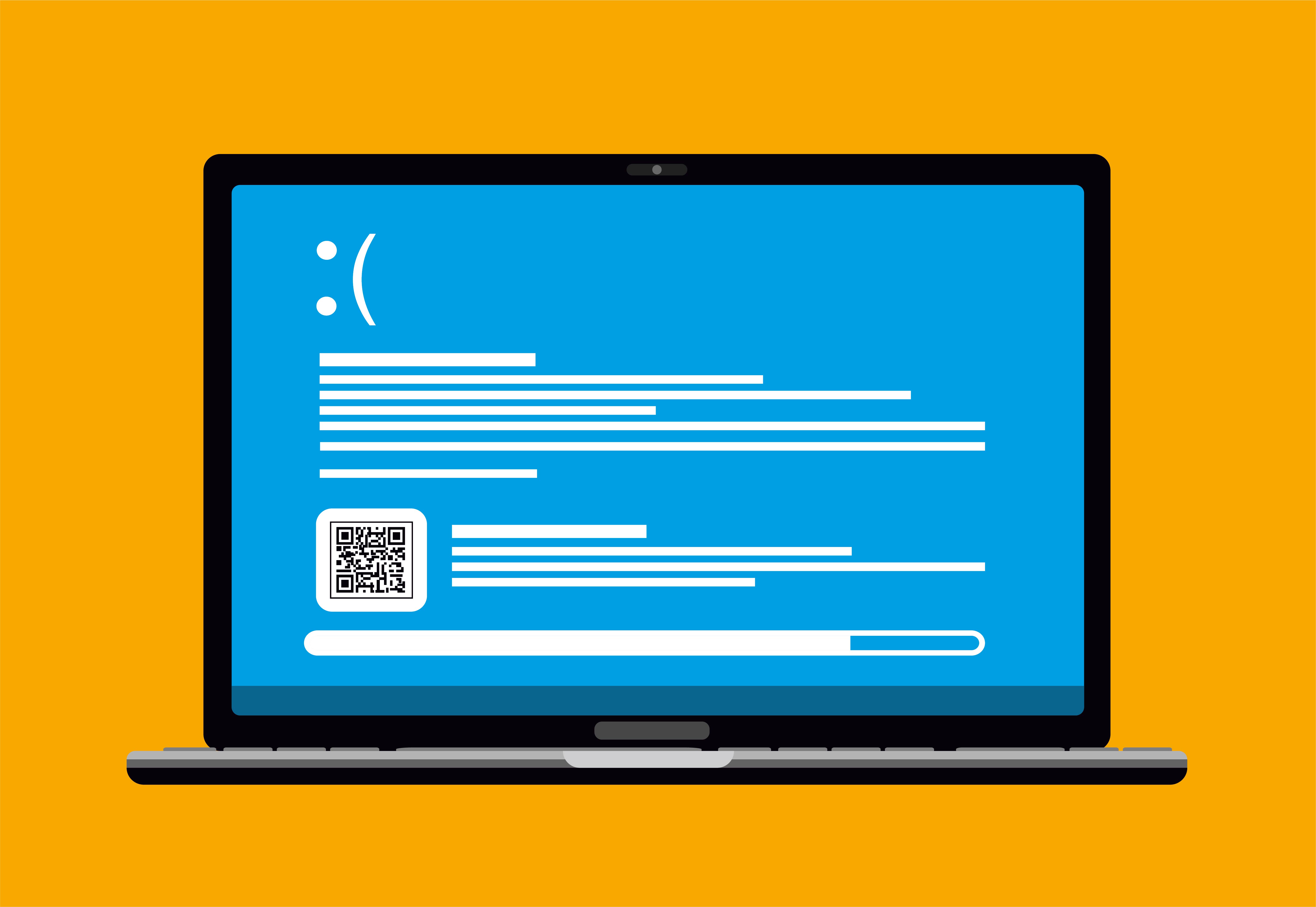Ubuntu vs. Windows 7 on the business desktop
Microsoft Windows may be the de facto standard desktop operating system in business environments, but high costs, restrictive licences and constant security issues are leading an increasing number of companies to consider open source alternatives — as Kat Orphanides explains.

The toolbar also has the Ubuntu Dash button, which works much like the Windows 7 Start menu.The rest of the toolbar's contents are context sensitive and change according to the application in focus. If the Desktop is active, for example it shows menus with shortcuts to key local directories and the rest of the network, options to create new folders and documents, and to change the appearance of the Desktop. With Firefox in active use though, the toolbar changes to show bookmarks, web browser tools and so on.
The toolbar also has the Ubuntu Dash button, which works much like the Windows 7 Start menu. When clicked, it opens a translucent window with shortcuts to key applications like the web browser and email client, along with shortcuts to application groups like internet' and media'.

These groups mix both installed and available-to-install software, with the latter option resulting in the appropriate download from the Ubuntu Software Centre, although it did mistakenly prompt for an installation disc in one isolated instance. The Dash also has a Search box that makes it easier to find a particular application on a system with lots of installed software.
Software Installation
Software installation is one area where Ubuntu trumps Windows for convenience, thanks to the complete online distribution of applications through its Software Centre and other third-party software repositories.
Managed by Canonical, the Ubuntu Software Centre provides downloads for a massive archive of Ubuntu-compatible programs and also provides a convenient interface for managing installed software. Applications can eve searched for by name or function, and also offers user ratings.

Everything the Software Centre provides is extensively tested and safe to install, but IT managers who would rather retain control over the applications their users are able to install can simply set-up accounts without privileged superuser' (or sudo') access.
Application and operating system updates are also delivered through the Software Centre, and notification updates are shown via the Updates icon on the Ubuntu Unity Launcher. Individual updates can be enabled here, as can updates only for important security fixes.
Get the ITPro daily newsletter
Sign up today and you will receive a free copy of our Future Focus 2025 report - the leading guidance on AI, cybersecurity and other IT challenges as per 700+ senior executives
If bandwidth is a concern, it's also possible to create an offline update repository that downloads files just once, and then redirect each Ubuntu PC to this instead.
This set-up compares extremely well to Microsoft Windows Server Update Services (WSUS), which performs a similar function for local software updates, but requires an administrator to perform time-consuming approvals for updates rolled out across a network.
K.G. is a journalist, technical writer, developer and software preservationist. Alongside the accumulated experience of over 20 years spent working with Linux and other free/libre/open source software, their areas of special interest include IT security, anti-malware and antivirus, VPNs, identity and password management, SaaS infrastructure and its alternatives.
You can get in touch with K.G. via email at reviews@kgorphanides.com.
-
 Why keeping track of AI assistants can be a tricky business
Why keeping track of AI assistants can be a tricky businessColumn Making the most of AI assistants means understanding what they can do – and what the workforce wants from them
By Stephen Pritchard
-
 Nvidia braces for a $5.5 billion hit as tariffs reach the semiconductor industry
Nvidia braces for a $5.5 billion hit as tariffs reach the semiconductor industryNews The chipmaker says its H20 chips need a special license as its share price plummets
By Bobby Hellard
-
 Linux just hit an all-time high share of the global desktop market — and surging popularity in India is driving uptake of the open source operating system
Linux just hit an all-time high share of the global desktop market — and surging popularity in India is driving uptake of the open source operating systemNews Linux is still dwarfed by operating systems such as Windows, but it’s making modest gains off the back of growing popularity in emerging markets
By Steve Ranger
-
 Linux Blue Screen of Death gives users a taste of the dreaded Windows feature
Linux Blue Screen of Death gives users a taste of the dreaded Windows featureNews The Linux Blue Screen of Death has been added in a recent update
By Ross Kelly
-
 Tiny11 review: Windows 11 with only 2GB of RAM
Tiny11 review: Windows 11 with only 2GB of RAMReview A version of Windows 11 for older machines that don't meet the full requirements
By Nik Rawlinson
-
 Red Hat Enterprise Linux becomes foundational operating system for Cohesity Data Cloud
Red Hat Enterprise Linux becomes foundational operating system for Cohesity Data CloudNews New strategic partnership between Red Hat and Cohesity aims to drive innovation in the data security and management space
By Daniel Todd
-
 Ubuntu shifts to four-week update cycle
Ubuntu shifts to four-week update cycleNews Critical fixes will also come every two weeks, mitigating the issues involved with releasing prompt patches on the old three-week cadence
By Richard Speed
-
 AlmaLinux follows Oracle in ditching RHEL compatibility
AlmaLinux follows Oracle in ditching RHEL compatibilityNews Application binary compatibility is now the aim with 1:1 now dropped
By Richard Speed
-
 How big is the Windows 10 cliff-edge?
How big is the Windows 10 cliff-edge?ITPro Network With some comparing the upcoming Windows 10 end of life to Windows XP, we ask members of the ITPro Network for their insight
By Jane McCallion
-
 Everything you need to know about the latest Windows 11 updates - from bug fixes to brand-new features
Everything you need to know about the latest Windows 11 updates - from bug fixes to brand-new featuresNews Two new cumulative updates are on the way and will be installed automatically on Windows 10 and Windows 11 machines
By Rory Bathgate